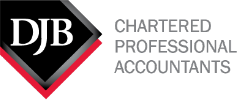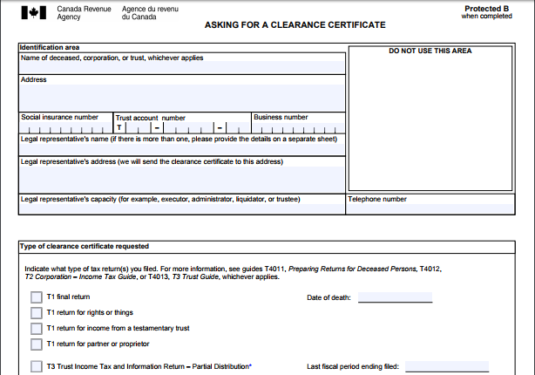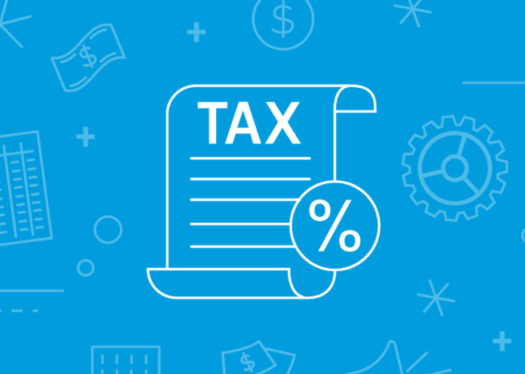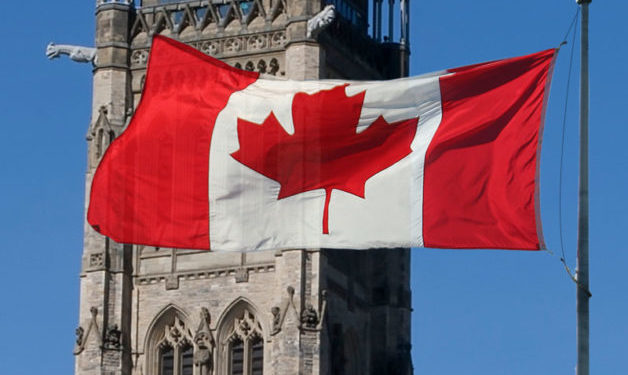Key budget insights and implications for the middle market
On April 7, 2022, Canada’s Minister of Finance, Chrystia Freeland, released Canada’s 2022 budget.
The budget is based on three pillars: (i) investing in people by increasing the housing supply and establishing affordable child care, (ii) facilitating a transition to a green economy to fight climate change, and (iii) incentivizing and supporting Canadian production and innovation.
The budget signals the end of COVID-19 subsidies and credits, and adopts a measure of fiscal restraint. From a tax perspective, the only tax rate increases are on banks and life insurers. However, there is a clear focus on strengthening anti-avoidance rules and eliminating other tax deferrals and benefits that could affect many middle market businesses. In this respect, Budget 2022 continues one of the themes from Budget 2021, which introduced the Luxury Tax, the Digital Services Tax, mandatory disclosure rules and enhanced collection measures to combat tax avoidance.
This tax alert summarizes the business and personal income and indirect tax measures in Budget 2022 relevant to the middle market.
Audit and enforcement
Budget 2022 reiterates the government’s intention to correct perceived inequalities in the tax system by bolstering anti-avoidance rules and enhancing audit and enforcement measures.
Expanding the application of the general anti-avoidance rule
The general anti-avoidance rule—or GAAR—is an anti-avoidance measure that the Canada Revenue Agency (CRA) uses to combat abusive tax avoidance strategies that are not subject to specific anti-avoidance rules in the Income Tax Act (ITA). In recent years, the courts have held that the GAAR does not apply to an increase to a tax attribute that has not yet been utilized to reduce taxes.
The government sees this line of decisions as running counter to the policy underlying the GAAR. As a result, Budget 2022 proposes to amend the GAAR so that it will apply to transactions that increase or preserve tax attributes even when the tax attributes have not yet become relevant to the computation of tax. This measure would apply to notices of determination (regarding the tax attribute) on or after April 7, 2022.
This change, once legislated, will significantly expand the scope of the GAAR.
Previously announced measures
Budget 2022 confirms the government’s intention to proceed with previously announced enhancements to audit powers, anti-avoidance rules and collection measures, including the following:
- Enhanced reporting requirements for certain trusts
- Mandatory disclosure rules
- Bolstering collection measures to prevent tax avoidance
- Requiring oral interviews and other reasonable cooperation practices during audits
Business tax
Aside from two new taxes on banks and life insurers, the budget proposes no changes to the federal corporate income tax rates or the $500,000 small business limit. However, the government proposes to expand eligibility for the small business deduction, allowing more midsize businesses to benefit from the lower rate.
Small business deduction
The small business deduction (SBD) provides eligible Canadian-controlled private corporations (CCPCs) with a reduced corporate income tax of 9%. Currently, the limit is reduced on a straight-line basis when:
- The combined taxable capital employed in Canada of the CCPC and its associated corporations is between $10 million and $15 million; or
- The combined adjusted aggregate investment income of the CCPC and its associated corporations is between $50,000 and $150,000
Budget 2022 proposes to extend the range over which the business limit is reduced based on the combined taxable capital employed in Canada of the CCPC and its associated corporations: the taxable capital range is between $10 million and $50 million. Applying to taxation years that begin on or after April 7, 2022, this proposed change will allow more medium-sized CCPCs to benefit from the SBD.
Additional taxes on banks and life insurers
First, Budget 2022 proposes the Canada Recovery Dividend (CRD), which is a one-time 15% tax on banks and life insurers (as determined under Part VI of the ITA). The 15% tax would apply on an entity’s taxable income over $1 billion as determined for taxation years ending in 2021. The CRD liability would be imposed for the 2022 taxation year and is payable in equal amounts over a five-year period.
Second, the budget proposes a permanent increase to corporate tax rates for banks and life insurers (as determined in the same manner as the CRD) by introducing an additional tax of 1.5% on taxable income above $100 million. The proposed additional tax applies to taxation years that end after April 7, 2022.
Introduction of substantive CCPCs to counter deferral of tax
Some taxpayers interpose foreign entities into their corporate structure to avoid being designated as a CCPC. Although CCPCs enjoy beneficial tax treatment in some instances, they are subject to a temporary tax on investment income that, in effect, is double the tax rate that a non-CCPC pays on its investment income. Loss of CCPC status in many instances results in the elimination of an additional layer of refundable taxes that would otherwise apply on investment income. Notwithstanding that such taxes would eventually be payable upon a distribution of the investment income to individual shareholders, the elimination of CCPC status would provide for a deferral advantage until such time.
To curb such tax planning, the budget introduces the concept of “substantive CCPCs” to capture corporations that would otherwise not be CCPCs and subject them to CCPC taxation on investment income. However, the substantive CCPCs would continue to be treated as non-CCPCs for all other purposes of the ITA.
The budget defines substantive CCPCs as private corporations resident in Canada (other than CCPCs) that are ultimately controlled (in law or fact) by Canadian-resident individuals. Similar to the CCPC criteria, the test would contain an extended definition of control that would aggregate the shares owned, directly or indirectly, by Canadian resident individuals, and would therefore deem a corporation to be controlled by a Canadian resident individual where Canadian individuals own, in aggregate, sufficient shares to control the corporation.
The budget aligns the taxation rules of investment income earned and distributed by substantive CCPCs with the rules that apply to CCPCs. However, the budget provides an exception to genuine commercial transactions entered into before April 7, 2022, where the share sale occurs before the end of 2022.
The budget aims to ensure that the investment income earned and distributed by substantive CCPCs is taxed in the same manner as CCPCs. These rules are intended to ensure that private corporations cannot effectively avoid CCPC status and applicable anti-deferral rules. They also capture arm’s-length transactions where a non-resident buyer has a right to acquire shares of a CCPC.
Elimination of the flow-through share regime for oil, gas and coal activities
To phase out inefficient fossil fuel subsidies, the government proposes to eliminate the flow-through share regime for fossil fuel sector activities.
In general, flow-through shares provide certain companies with greater access to financing by forgoing the tax benefit of Canadian exploration expenses and Canadian development expenses to investors. The investors who hold the flow-through shares are permitted to deduct the expenses that the corporation has renounced to them in calculating their taxable income.
Budget 2022 proposes to eliminate the flow-through share regime for oil, gas and coal activities by no longer allowing oil, gas and coal exploration or development expenditures to be renounced to a flow-through share investor.
This measure will apply to flow-through share agreements entered into after March 31 2023.
Critical mineral exploration tax credit
Although the budget proposes to phase out flow-through shares for inefficient fossil fuel subsidies, it introduces a 30% tax credit for individuals who invest in specified minerals that are used in the production of zero-emission vehicles and other clean technologies.
Expansion of clean energy tax benefits
Building on previous measures introduced for investments in clean energy, Budget 2022 proposes to expand these benefits to include air-source heat pumps.
Immediate expensing
Under the CCA regime, Classes 43.1 and 43.2 provide accelerated CCA rates (30% and 50%, respectively) for investments in specified clean energy generation and energy conservation equipment. On Nov. 21, 2018, the government introduced immediate expensing for Class 43.1 and 43.2 assets. Budget 2022 proposes to expand the list for eligible property to include air-source heat pumps primarily used for space or water heating.
Corporate tax rate reduction for zero-emission technology manufacturers
In Budget 2021, the government reduced the corporate income tax rate on eligible zero-emission technology manufacturing and processing income as follows:
- From 15% to 7.5%, where the income is subject to the general corporate tax rate; and
- From 9% to 4.5%, where the income is subject to the small business tax rate.
Budget 2022 proposes to include the manufacturing of air-source heat pumps as an eligible activity for purposes of the temporary corporate tax rate reduction for qualifying zero-emission technology manufacturers.
International tax
Amendments to foreign accrual property income rules for CCPCs and substantive CCPCs
Budget 2022 proposes targeted amendments to the foreign accrual property income, or FAPI, rules to prevent taxpayers from gaining a tax deferral advantage by earning certain types of income (including investment income) through controlled foreign affiliates (CFAs) that are held by CCPCs and substantive CCPCs (as introduced in the budget and described above).
Unlike the domestic anti-deferral rules that tax investment income at a higher rate for CCPCs than for non-CCPCs to achieve tax neutrality, the FAPI rules tax all Canadian corporations at the same rate (whether CCPC or non-CCPC). This creates a deferral advantage for CCPCs and their individual shareholders.
The budget proposes to eliminate the tax deferral advantage to CCPCs (including substantive CCPCs) and their individual shareholders by adjusting the FAPI computation for CCPC for these types of entities. In tandem, the budget also proposes amendments so that integration (tax neutrality) will be achieved by adding amounts to the capital dividend account that can be distributed to a Canadian individual tax-free.
These measures would apply to taxation years that begin on or after April 7, 2022.
CCPCs and substantive CCPCs that earn FAPI (including investment income) through CFAs should revisit their international corporate structures as the proposed rules will eliminate the tax deferral previously available.
Interest coupon stripping
The budget proposes to apply the withholding tax rules on interest paid under an interest coupon stripping arrangement as though interest had been paid to the non-resident non-arm’s length lender.
Interest coupon stripping arrangements involve a non-resident lender selling its right to receive future interest payments (interest coupons) from a non-arm’s length Canadian-resident borrower to a party that is not subject to withholding tax (e.g., a person resident in Canada) or a person resident of a country with a lower treaty reduced withholding tax rate.
This measure is expected to apply on interest paid or payable by a Canadian-resident borrower to the interest coupon holder to the extent that such interest accrued on or after April 7, 2022, subject to certain exceptions for debt obligations entered into before April 7, 2022.
Exchange of tax information on digital economy platform sellers
Consistent with the Organisation for Economic Co-operation and Development’s rules for reporting by digital platform operators with respect to platform sellers, the budget has proposed to implement similar rules in Canada to ensure that revenue earned by taxpayers through those platforms can be properly taxed.
The proposed measure would require platform operators who provide support to reportable sellers for relevant activities (e.g., rental of immovable property or means of transportation or personal services) to complete due diligence procedures to identify reportable sellers and their jurisdiction of residence.
The proposed measures apply to a platform operator that is (i) resident in Canada or (ii) not resident in Canada but facilitates relevant activities of sellers resident in Canada, or with respect to rental of immovable property located in Canada. Certain platform operators would be excluded.
The CRA would automatically exchange information received from Canadian platform operators with partner jurisdictions under the exchange of information provision in tax treaties and similar international instruments. This measure will allow Canadian tax authorities to access information on platform sellers earning income in Canada which may result in additional tax obligations and compliance in Canada.
This measure would apply to calendar years beginning after 2023.
Transfer pricing
Budget 2022 focuses on the Inclusive Framework on Base Erosion and Profit Shifting, and largely reaffirms Canada’s positions. The government also commits to continue efforts around the transfer pricing consultation announced in Budget 2021.
Pillar One (reallocation of taxing rights)
Pillar One seeks to introduce profit allocation and update existing nexus rules for certain multinational enterprises. It is expected to initially target companies with revenues greater than 20 billion euros and profitability above 10%. The government has affirmed it is working with international partners to further develop the Pillar One framework and bring the rules into effect.
If Pillar One is not implemented in a timely fashion, the government will continue to advance the Digital Services Tax.
Pillar Two (global minimum tax)
Pillar Two seeks to introduce a minimum effective tax rate of 15% for large multinational enterprises (expected to be entities with revenue greater than 750 million euros).
Budget 2022 proposes to implement Pillar Two effective 2023, with public consultation being launched as part of Budget 2022.
Credits and incentives
The budget renews funding for many well-used credit and incentive programs for Canadian businesses. Specifically, existing programs designed to spur innovation investment and tourism, and to increase agricultural production output, have been bolstered in the budget. Many incentives have a clean technology component to help companies reduce greenhouse gas emissions while enhancing their operations.
Agricultural grants
Targeted agricultural grants will be dispersed through the country, to be administered by the provinces. These grants are designed to address regional issues and foster growth in the different agricultural subsectors across the country. Agricultural producers and processors will enjoy a range of grants for sustainable agriculture, potentially enhancing operational efficiency while reducing their farming/production emissions.
Innovation funding
Innovation funding targets programs that partner with organizations on large projects for industries ranging from manufacturing to life sciences. A particular area of focus is increasing the strength of specific innovative sectors such as carbon capture utilization and storage (CCUS) and the semiconductor industry.
The new CCUS refundable tax credit is between 37.5% and 60% of the costs associated with eligible projects and equipment.
Tourism
The government has announced significant investment to generate visits from foreign nationals to various destinations in Canada. These investments exceed $1 billion, plus additional funding to support the Indigenous tourism industry.
Scientific research and experimental development
No changes are proposed to the well-used scientific research and experimental development—SR&ED—program. Canadian businesses can continue to take advantage of these tax credits to help with costs incurred when undertaking advanced research and development.
Personal tax
With a focus on economic growth, inclusivity, and making life more affordable for Canadians, Budget 2022 includes several key measures targeted toward individuals.
Notably, there are no changes to personal tax rates.
Genuine intergenerational share transfers
Having received royal assent on June 29, 2021, Bill C-208 was intended to provide an exception to surplus stripping rules in order to facilitate genuine intergenerational business transfers. However, the government soon realized that the bill may have unintentionally permitted surplus stripping without requiring that a genuine transfer take place. As a result, the government previously indicated its intention to revise the legislation to limit its scope.
Budget 2022 announces a consultation process among stakeholders and key affected sectors such as the agriculture industry. This will allow Canadians to share their views as to how the existing rules could be modified. The Department of Finance has asked that all comments be submitted by June 17, 2022.
Taxpayers contemplating succession of business ownership to family members will need to carefully navigate the proposed rules and any required documentation to avoid any unexpected tax consequences. Taxpayers may benefit from expediting such transactions before additional measures come into effect.
Residential property flipping
As part of the government’s effort to make housing more affordable, Budget 2022 proposes a new rule that would deem proceeds earned on the sale of a residential property owned for less than 12 months to be business income.
This proposed measure targets individuals who purchase real estate with the intention of flipping the property within a short period of time. The deeming rule will not apply if the disposition of property is in relation to one of several life events, such as the death of a taxpayer, change in work location or the breakdown of a marriage.
The new deeming rule would apply to any residential properties sold on or after Jan. 1, 2023. An individual who is considering selling a house should ensure that the house is owned for more than one year.
Enhanced support for taxpayers looking to buy first homes
The budget includes several measures to assist first-time home buyers.
First, the budget proposes to create a Tax-Free First Home Savings Account (FHSA), a new registered account to assist individuals in saving for their first home. To qualify, individuals must be (i) resident in Canada, (ii) at least 18 years of age, and (iii) not have lived in a home they owned at any time in the year the account is opened or in the four preceding calendar years. Contributions to the FHSA are tax deductible but are not taxable when withdrawn for an eligible home purchase. The FHSA has an annual contribution limit of $8,000 and a lifetime limit of $40,000. Funds can be transferred from an existing registered retirement savings plan to an FHSA, subject to the annual and lifetime limits. Budget 2022 proposes that the FHSA will be introduced in 2023.
Second, the government will double the First-Time Home Buyer’s Tax Credit (HBTC) from $750 to $1,500. This measure will apply to acquisitions of a qualifying home made on or after Jan. 1, 2022.
Enhanced support for homeowners
The new Multigenerational Home Renovation Tax Credit is a refundable credit for eligible expenses incurred for a qualifying renovation, which is one that creates a secondary dwelling unit permitting an eligible person (including a senior or person with a disability) to live with a qualifying relation. The credit can be claimed by an individual who ordinarily resides in the eligible dwelling in the amount of 15% of the lesser of eligible expenses and $50,000 within 12 months after the end of the renovation period. This measure will apply for the 2023 and subsequent taxation years, in respect of work performed and paid for and/or goods acquired on or after Jan. 1, 2023.
The Home Accessibility Tax Credit (HATC) is a non-refundable tax credit for eligible home renovation or alteration expenses in respect of an eligible dwelling of a qualifying individual. Budget 2022 proposes to increase the annual expense limit of the HATC from 15% of $10,000 to 15% of $20,000. This will provide additional tax support for more significant renovations undertaken to improve accessibility. This measure will apply to expenses incurred in the 2022 and subsequent taxation years.
Indirect tax measures
Assignment sales
With a view to curbing speculative trading in the Canadian housing market, Budget 2022 proposes to make all assignment sales of newly constructed or substantially renovated residential housing taxable for Goods and Services Tax/Harmonized Sales Tax (GST/HST) purposes, effective May 7, 2022. An assignment sale is a transaction in which a purchaser of a new home from a builder sells the purchase rights and obligations under the agreement with the builder to another person.
The proposal may affect the amount of a GST new housing rebate or of a new housing rebate in respect of the provincial component of the HST, as the rebates are based on the total consideration payable for a taxable supply of a home, including the consideration for a taxable assignment sale.
Expanded hospital rebate
Budget 2022 proposes to amend the GST/HST eligibility rules for the expanded hospital rebate that covers charities and nonprofit organizations that provide health care services similar to those traditionally performed in hospitals.
Under the current GST/HST rules, hospitals can claim an 83% rebate and charities and non-profit organizations can claim a 50% rebate of the GST and the federal component of the HST. Currently, one of the conditions to be eligible for the expanded hospital rebate is that a charity or non-profit organization must deliver the health care service in a geographically remote community.
Budget 2022 proposes to extend the GST/HST rebate to health care services provided by charities or non-profit organizations irrespective of geographical location. This measure will generally apply to rebate claim periods ending after April 7, 2022, in respect of tax paid or payable after that date.
This measure will allow all charities and nonprofits that provide health care services to reduce their operating costs.
Excise Act 2001 measures
Taxation of vaping products
Following consultation, the government is proposing various changes to the rules originally proposed in Budget 2021. The new tax will apply to vaping products that include either liquid or solid vaping substances with an equivalency of 1 millilitre of liquid to 1 gram of solids. It will not apply to those vaping products subject to cannabis excise duties or those produced by individuals for personal consumption. Additionally, the government is prepared to collect provincial duties for coordinating provinces or territories. There will be a travel exemption for vaping products that are imported for personal use by travellers.
Cannabis framework
The government is proposing to streamline, strengthen and adapt the cannabis taxation framework. Quarterly remittances will be allowed for producers that were required to remit less than $1 million in excise duties during the four fiscal quarters immediately preceding the quarter ending April 1, 2022. Transfers of packaged and unstamped products will be allowed in certain contract-for-service situations upon royal assent. The penalty for lost stamps will be adjusted so that the penalty will be higher if the stamp is for a coordinating province or territory. This reflects the fact that the stamp for a coordinating jurisdiction has a higher value since it represents both the federal and coordinating province tax. The requirement to hold a cannabis excise licence will be removed for entities that hold a Health Canada-issued research licence or cannabis drug licence.
General administration
The budget proposes to match the cancellation conditions for an excise licence with the conditions required to suspend a licence. Applicants for a tobacco, spirits, wine and/or cannabis excise licence will now be required to comply with all federal and provincial legislation and regulations respecting the taxation and control of cannabis in addition to those respecting tobacco, spirts and wine. Acceptable security will no longer include cash and transferrable bonds from the government of Canada, but will now include bank drafts and Canada Post money orders. The CRA will now be able to carry out virtual audits and reviews where the agency deems it appropriate, even after the end of the pandemic.
Canadian wine
Canadian wine is currently exempt from excise duties if it is produced in Canada and is wholly composed of agricultural or plant products grown in Canada. However, this exemption will be repealed on June 20, 2022, in response to a settlement agreement to a World Trade Organization challenge.
Beer taxation under the Excise Act
The Excise Act will be amended to reduce the existing tax on beer having no more than 0.5% of alcohol by volume (ABV). This will bring this product in line with the existing exemption for wines and spirits containing no more than 0.5% ABV.
The measures are intended to ensure equity among products and to simplify administration.
RSM Contributors
Peter Ahn, Sr. Director
Dan Beauchamp, Sr. Director
Allison Baum, Sr. Manager
Sigita Bersenas, Associate
Bob Boser, Partner
Adrian Jack, Manager
Marino Jeyarajah, Partner
Nakul Kohli, Manager
Danny Ladouceur, Partner
Bev Lucas-King, Sr. Manager
Sean McNama, Partner
Hayley Mercer, Manager
Yoni Moussadji, Sr. Manager
Clara Pham, Partner
Shannon Preitauer, Supervisor
Austen Ramsay, Partner
Melina Rocha, Manager
Stephen Rupnarain, Partner
Greg Synanidis, Sr. Manager
Sam Tabrizi, Partner
Enzo Testa, Partner
Chetna Thapar, Sr. Associate
Danielle Wallace, Manager
Source: RSM Canada
Used with permission as a member of RSM Canada Alliance
https://rsmcanada.com/insights/budget-commentary/2022-canada-federal-budget-detailed-commentary.html
The information contained herein is general in nature and based on authorities that are subject to change. RSM Canada guarantees neither the accuracy nor completeness of any information and is not responsible for any errors or omissions, or for results obtained by others as a result of reliance upon such information. RSM Canada assumes no obligation to inform the reader of any changes in tax laws or other factors that could affect information contained herein. This publication does not, and is not intended to, provide legal, tax or accounting advice, and readers should consult their tax advisors concerning the application of tax laws to their particular situations. This analysis is not tax advice and is not intended or written to be used, and cannot be used, for purposes of avoiding tax penalties that may be imposed on any taxpayer.
RSM Canada Alliance provides its members with access to resources of RSM Canada Operations ULC, RSM Canada LLP and certain of their affiliates (“RSM Canada”). RSM Canada Alliance member firms are separate and independent businesses and legal entities that are responsible for their own acts and omissions, and each are separate and independent from RSM Canada. RSM Canada LLP is the Canadian member firm of RSM International, a global network of independent audit, tax and consulting firms. Members of RSM Canada Alliance have access to RSM International resources through RSM Canada but are not member firms of RSM International. Visit rsmcanada.com/aboutus for more information regarding RSM Canada and RSM International. The RSM trademark is used under license by RSM Canada. RSM Canada Alliance products and services are proprietary to RSM Canada.
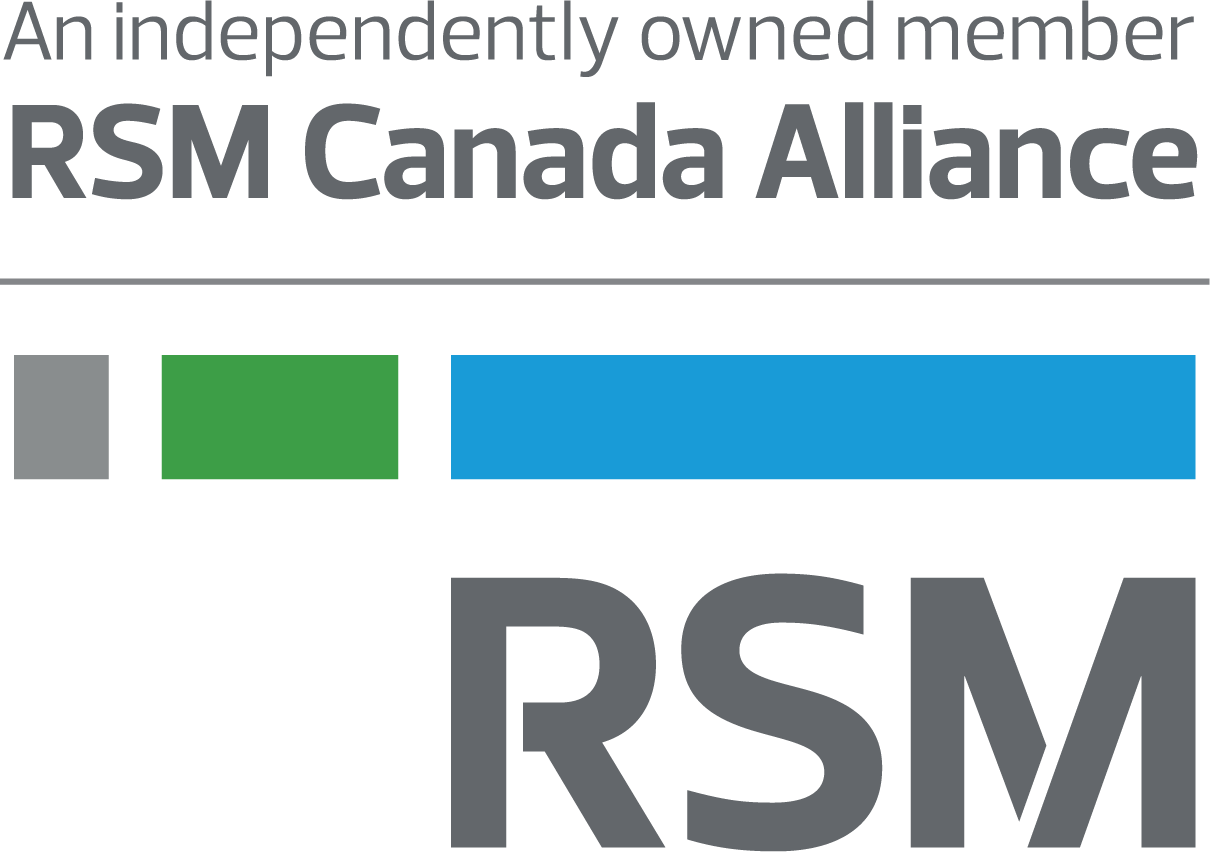 |
DJB is a proud member of RSM Canada Alliance, a premier affiliation of independent accounting and consulting firms across North America. RSM Canada Alliance provides our firm with access to resources of RSM, the leading provider of audit, tax and consulting services focused on the middle market. RSM Canada LLP is a licensed CPA firm and the Canadian member of RSM International, a global network of independent audit, tax and consulting firms with more than 43,000 people in over 120 countries.
Our membership in RSM Canada Alliance has elevated our capabilities in the marketplace, helping to differentiate our firm from the competition while allowing us to maintain our independence and entrepreneurial culture. We have access to a valuable peer network of like-sized firms as well as a broad range of tools, expertise, and technical resources.
For more information on how DJB can assist you, please contact us.
|
